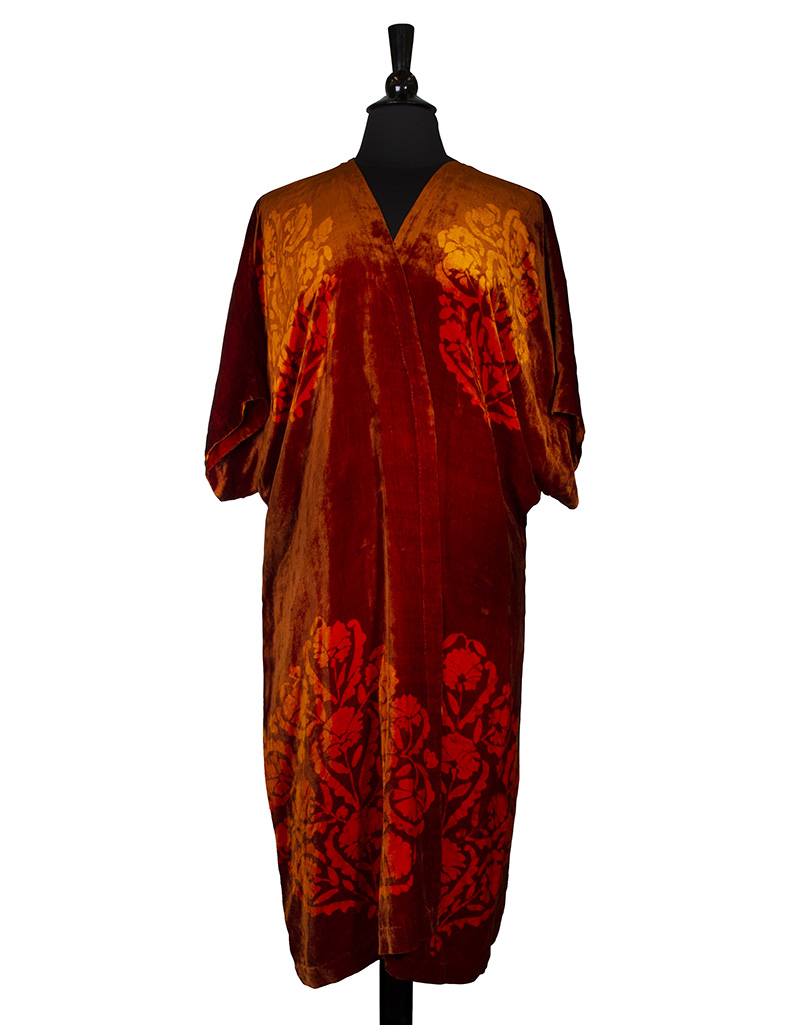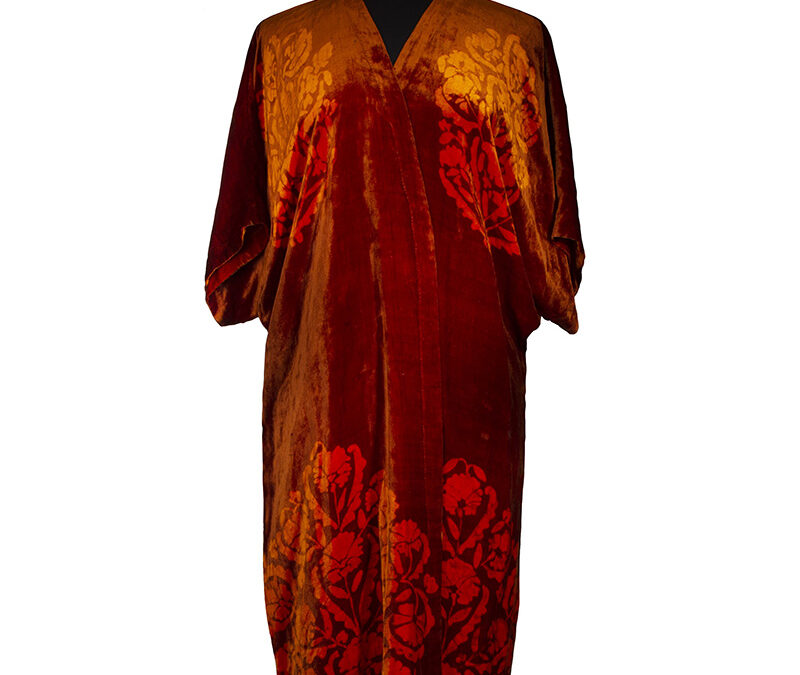
| Maker | Ethel Wallace (1886–1968) |
| Date of Creation | c. 1920 |
| Location | New York, New York |
| Materials | Velvet; wax; dye |
| Institution | James A. Michener Art Museum |
| Credit Line | James A. Michener Art Museum. Gift of Mrs. Darragh Ellerson. |
| Accession Number | 2023.28.1 |
| Photo Credit | Christian Giannelli |
Through its batik design, this gown by artist and fashion designer Ethel Wallace (1886–1968) is a dynamic artifact that narrates the assimilation of a Southeast Asian textile dye technique in both U.S. national and regional art. In 1912, Ethel Wallace moved from her hometown of Lambertville, NJ, to New York City, where she quickly joined the New York avant-garde art scene. Expanding upon her Pennsylvania Impressionist training, Wallace began painting on fabric with batik, an Indonesian wax-resist dye method. Drawn to the crackle aesthetic and free-flowing geometry of batik designs, American artists embraced the craftsmanship of the dye technique, enveloping batik into the larger Arts and Crafts movement. By the time that Wallace opened her studio on 62 Washington Square Park, Greenwich Village had become home to artists such as Marguerite Zorach, Amy Mali Hicks, and Martha Ryther, who incorporated batik in their textile art. Batik’s popularity in American art, however, was predicated on earlier encounters with the medium in ethnographic collections and colonial expositions. In 1893, the Java Village at the World’s Columbian Exposition in Chicago staged one of batik’s earliest appearances in the United States. On the Midway Plaisance, Javanese craftspeople practiced the textile technique before American viewers. Around the same time, Dutch artists encountered batik through ethnographic collections and world’s fairs in the Netherlands. They began adapting batik to create their own designs, shifting the contexts of this dye practice from ethnography to fine art. Wallace’s gown traces the early 20th-century transformation of batik in American material culture. While made in New York City by an artist born in New Jersey, her widely acclaimed batik designs were the products of a global constellation of colonial expositions, ethnographic collections, and the Arts and Crafts movement.

